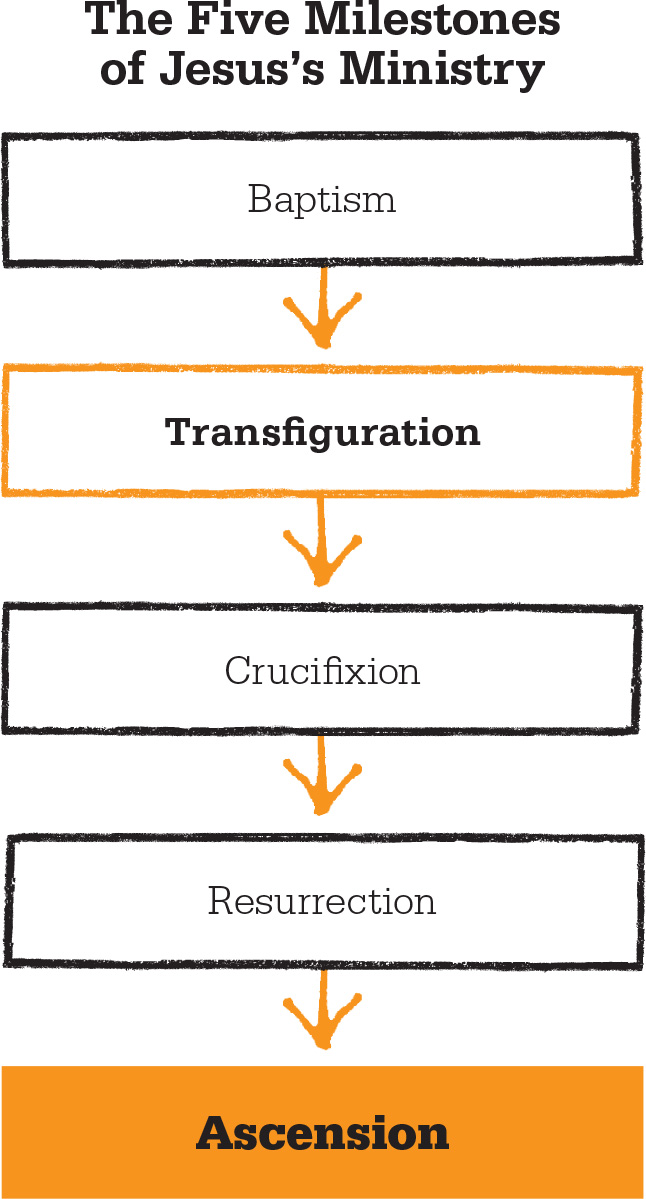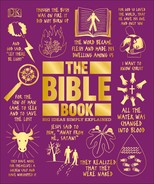
IN BRIEF
Matthew 17:1–13; Mark 9:2–13; Luke 9:28–36
Jesus is affirmed by God
c.27–29 CE Mount Tabor.
Jesus The Messiah and Son of God during His ministry.
Peter Together with James and John, a member of Jesus’s inner circle of three disciples.
James and John Sons of Zebedee. Originally fishermen on the Sea of Galilee.
Moses Israel’s liberator and lawgiver, who led the people out of slavery in Egypt.
Elijah A prophet active in the reign of King Ahab of Israel in the 9th century BCE.
Mark, Matthew, and Luke—the so-called Synoptic Gospels—all tell the story of the Transfiguration. This event follows two outbursts by Peter, one of Jesus’s favored disciples. In the first, Peter makes a bold statement about Jesus’s identity: “You are the Christ, the son of the living God” (Matthew 16:15). After the second, in which Peter objects to Jesus’s intimations that He will suffer rejection and be killed, Jesus issues the stinging reply: “Get behind me, Satan!”—“Satan” here meaning simply an adversary of the Lord—“Your thoughts are not thoughts from God but from men” (Mark 8:33).

Shining glory
Six days after Jesus’s rebuke, according to Mark and Matthew, or eight days in Luke, Jesus takes His closest disciples—Peter and the brothers James and John—up a high mountain. A tradition dating from the 4th century CE identifies it as Mount Tabor in Lower Galilee, but mounts Carmel and Horeb are other candidates. There, the astonished disciples witness an extraordinary metamorphosis. Jesus’s clothes become dazzling white—“no one on earth could clean them so white” (Mark 9:3)—while His face shines like the sun.
With Him are two other figures, whom the disciples identify as Moses and Elijah. The disciples are terrified and, as ever, it is Peter who speaks. He suggests erecting three shelters to worship in: one each for Jesus, Moses, and Elijah. However, as he speaks, a cloud envelops them and the voice of God comes forth: “This is my much loved Son. Listen to Him!” (Mark 9:7). After this, everything returns to normal. When the disciples look around, there is no one there but Jesus.

Divine revelation
The Transfiguration has been seen by some theologians as a blueprint for how to respond to the glory of God. While the disciples’ first response is to fear it, they learn to listen and believe, reassured by the touch of their friend, Jesus, who says, “Do not be afraid.” For a moment, it seems, some kind of partition is drawn back between the heavenly and earthly realms, allowing the disciples to glimpse Jesus in His glory as the Christ, the son of the living God.
In the Hebrew Bible, Yahweh reveals himself in a cloud on a mountaintop to both Moses and Elijah. The cloud that descends upon this mountain conveys the same divine presence, known in rabbinic literature as the Skekinah. The words uttered by God from the cloud are similar to those spoken at Jesus’s baptism: “This is my Son, whom I love” (Matthew 3:17).
God now adds a command: “Listen to Him!” Luke’s Gospel tells us more about what this refers to. In Luke’s version of events, Jesus, Moses, and Elijah speak with Jesus concerning His “departure, which He is about to bring to fulfillment at Jerusalem.” In other words, they are discussing the suffering and death Jesus had recently warned His disciples about. The use of the word “departure”—exodus in Greek—draws a deliberate parallel to the Old Testament. Just as Moses had freed the Israelites from Egypt, the suffering of Jesus would deliver the people from their sins.
“We did not follow cleverly devised stories … we were eyewitnesses of His majesty.”
2 Peter 1:16–18
The new Elijah

According to the Hebrew Bible, the prophet Elijah did not die in the usual sense. Instead, he was taken up into heaven in a blazing chariot of fire. This gave rise to a belief that he would come back one day to prepare the way for the Messiah. Indeed, the very last verses of the Old Testament make this prediction. “See, I will send you the prophet Elijah before that great and dreadful day of the Lord comes,” the prophet Malachi proclaims in Yahweh’s name.
Descending the mountain after the Transfiguration, the three disciples ask Jesus about this prophecy. His reply is that it has already been fulfilled in the person of John the Baptist: “But I tell you, Elijah has already come, and they did not recognize him … In the same way, the Son of Man is going to suffer at their hands” (Matthew 17:12). John the Baptist suffered and died at the hands of Herod Antipas, and Jesus says again that He will suffer the same fate. In fulfilling God’s plans for redemption and restoration, the way of glory and the way of suffering are inseparable.
See also: The Baptism of Jesus • The Crucifixion • The Empty Tomb • The Great Commission
